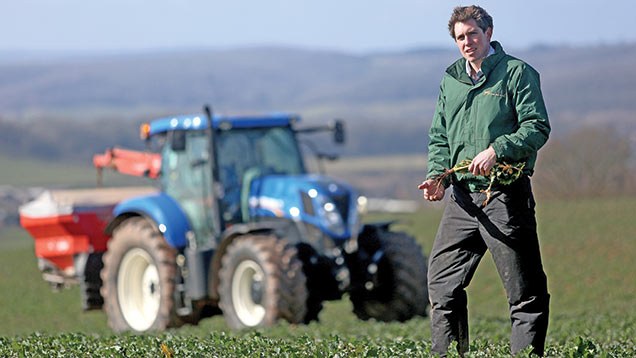Farmer Focus: Direct drilling trial brings spring benefits
 (c) Richard Stanton
(c) Richard Stanton After a period of settled weather, we have finally been able to travel with the fertiliser spreader. Priorities have been malting and feed barley, second wheat and some of the oilseed rape with a low green area index.
On the whole I am pleased with the oilseed rape. As the crop is so forward, with more than 50kg of nitrogen in it, fertiliser applications have been delayed.
See also: Read more from our arable Farmer Focus writers
Our on-farm trial, comparing direct drilled oilseed rape using a Sumo DTS drill with those drilled with more conventional methods, has produced some very encouraging results so far. With better rooting, a higher green area and firmer ground to travel on sooner, it has inspired me to try more direct drilling, should conditions allow this autumn.
In the past few weeks I have visited several cover crop trials which I have found very interesting, with off-the-shelf mixes publicised as being ideal soil improvers not performing so well in the field. In addition, you also have to question how much nitrogen the N-fixing mixes are going to add during the August-March growing period.
The overall principle of cover cropping seems morally right, but with seed costs of up to £70/ha and advisers suggesting the crop should be treated as a commercial crop, can a cover crop be justified? Or can we not afford not to invest in them for sustainable soil health?
Hopefully, by the time you read this we shall be into our spring drilling campaign, but until the ground dries out and the soil warms up, not a lot is planned. Looking ahead, the spring crops on contract appear to be those with the highest gross margins.
Having recently prepared our budget, why are we growing winter wheat and oilseed rape? It all seems to be about managing risk and having a diverse rotation
Jack Hopkins
Jack Hopkins is the assistant farm manager on a 730ha estate in North Herefordshire on predominantly silty clay loam soils. Cropping includes wheat, barley, oilseed rape, spring oats and peas, plus grassland that supports a flock of 1,000 ewes and 25 pedigree Hereford cattle.

